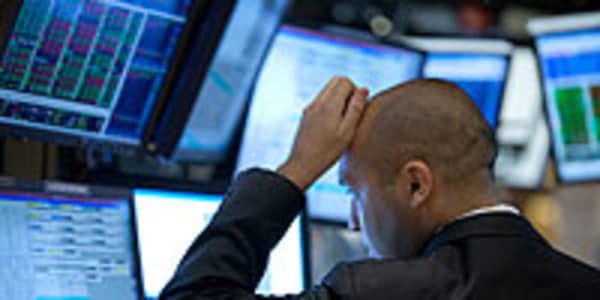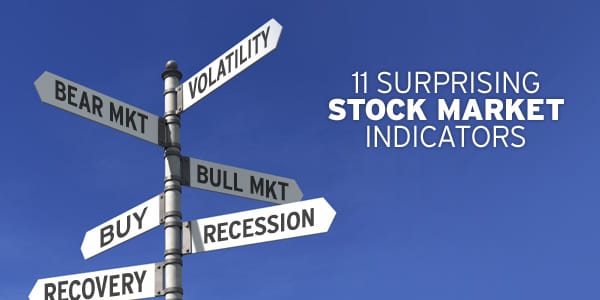So much for the supply-and-demand dynamic. Once again, the most important equation for the commodities markets these days is the value of the dollar.
Yes, the Asian-led world economic recovery has something to do with the price strength, and, yes, China is a huge consumer of all types of commodities, but like during the boom of two years ago, the US currency is a key consideration.
“But if the dollar keeps weakening,” says Gavin Maguire, Director of Research at EHedger, “nearly all commodities will favor the upside.”
The influence of the dollar is so great because all commodities are priced in the US currency, and today most dollars are consumed and held in countries outside of the U.S.
“With our government continuing to provide cheap money to the market place to help finance the recovery, commodities are going to outperform other asset classes going forward,” says Adam Klopfenstein, senior market strategist at Lind-Waldock, a division of MF Global.
That said, the biggest risk factor for commodities over the next few months is the reallocation of money back into the dollar. If there is a major correction in the stock market, investors will look for safety in the dollar, and that would be a caveat for the whole complex.
“Without that big switch in sentiment, the trends that we have seen over the six months will continue to play themselves out going forward,” says Klopfenstein.
Given this backdrop, here are some commodities that will be strong this winter and some others that will be vulnerable, particularly if there is a pullback in the equity market.
Gold: Still No. 1

With gold at record highs, it’s hard to believe that it will go any higher. Oh well.
“But gold is particularly affected by the weakness of the dollar because it has always been viewed as a safe haven for catastrophes and depreciation of currencies,” says Bill Gary, president of Commodity Information Systems Inc.
And, if the global economy continues to do well, we will still see even more people want to put their money into gold.
In the emerging markets, for example, banking systems are less developed than in the U.S., so people tend to buy more physical gold. The central banks themselves are starting to buy gold to diversify some of their reserves.
Other factors that should increase demand in the fourth quarter are the Chinese New Year and the Indian wedding season. Gold is a very popular gift and jewelry item in the two countries.
Sugar: Raising Cane
Sugar is one of the few commodities whose short supply would drive its price higher, regardless of the dollar situation.
The lack of rain in India, one of the largest sugar suppliers, has been a bullish force. If that situation does not improve in the coming months, it will be even more so.
There are also questions about whether Brazil is going to continue to make ethanol with the sugar that it produces, or start selling more of it on the open market.
“A lot of people want to see more information out of Brazil,” says Klopfenstein.
Crude Oil: As The World Turns
The defacto boss of the commodities sector, oil, is a prime example of the boost the weak dollar is giving commodity prices. Inventories are large, and demand is hardly spectacular. Though he says we will likely have some violent swings on both sides, Klopfenstein projects that crude will try to test $100 a barrel over the next six or seven months.
Asian demand is also a significant factor. A few years ago, Asia started to outpace Europe and by 2012, some predict it will also outpace the U.S. on a per-day basis.
“Oil has the potential to keep climbing if there is a rebound in global industrial activity, like more cars in India and China,” Maguire says.
Corn: Food-Fuel Factor
Though it is early in the season to talk about grains, the most positive market in the complex is corn. Because it is a feed source for humans and livestock, demand will stay pretty stable in the near term. That stability should lead to future demand.
Maguire expects corn prices to weaken 15 -20 percent up to December then rebound around the new year because of the U.S. harvest cycle.
“If you fast forward six months, corn will be at a price higher than today, but in the interim you can buy it for a cheaper price. Farmers will look at other crops if they don’t see corn prices above $4, which will decrease supply and raise prices in the longer term," Klopfenstein points out.
Natural Gas: Bloated Feeling
If there is a pullback in equities and a rally in the dollar, the commodities that will get hit the hardest are going to be the ones that had the least amount of upside in the first place, says Klopfenstein.
Though natural gas has lagged, it is starting to move higher due to seasonal factors. If this winter is not colder than expected in the northern part of the U.S., than prices will start heading lower because of significant inventory.
Soybeans: Blame It On Rio
Soybeans, which have been one of the strongest commodities for the past six to eight months due to a drought in Argentina, have the potential to turn into one of the weaker commodities in the agricultural realm.
With a record amount of crop expected out of South America in the early part of 2010, adding to a likely record-size U.S. crop, the market is anticipating at least 30 million more tons of soybeans than last year, says Maguire. Though there are many uses for the soybean, and Chinese demand will remain hefty, production will be much larger than demand.
Wheat: Amber Wave
Wheat also looks like it will be an underperformer for the opening months of 2010. In 2008, wheat prices sky-rocketed because of two consecutive droughts in Australia and growing problems in other regions. That period of price strength sent out strong production signals and the result has been a surge in production. which flooded the market.
Aluminum: Low Profile
Aluminum may lag quite a bit compared to the rest of the sector. Though metals are tied to industrial growth, there will be a meaningful jump in aluminum demand only when there is a discernible increase in aircraft manufacturing or new building construction, says Maguire.
“People are actually still cutting back on that side of things,” he says. Aluminum is tied to macro level industrial expansion, while copper is used in everything from alarm clocks to air conditioners.
Lumber: Petrified Wood
Like aluminum, lumber is used in new construction, and has not been an attractive market lately. Lumber prices right now are at their lowest since the mid 1980.
Though no one in the U.S. will break ground in the winter months, building will eventually pick up again, and lumber is always going to be a crucial ingredient, says Maguire. If you want to buy something at historically cheap levels that plays a crucial role in any kind of global industrial recovery, lumber is one of those things.
Cocoa: Too Hot?
There have been questions about the size of the crop in the Ivory Coast, and whether cocoa is overdone on the upside.
“It is a discretionary item, and it is a lot easier for the end consumer to pass on, as opposed to beans or corn which are food staples,” says Klopfenstein. If the equity market reverses and the dollar gains strength, this will be a market that will fall pretty hard, he adds.
Getting In The Game
Investing Options
If you are looking to get in to the commodities game, the good news is there are several ways to make them a part of your portfolio. The bad news is there are at least as many opinions as to which is the best way to do it. Choices include commodity stocks, exchange traded funds or commodities (ETFs or ETCs), commodity futures and commodity mutual funds.
One possibility is to buy stock in a commodity company, or one that has something to do with the production of a commodity. Here, you are not as prone to the volatility that is often associated with commodities, but you are not just trading the commodity, you’re trading the balance sheet and the management structure of that particular company, and that also has risk.
Exchange traded funds that are index funds that can be traded through brokerage accounts like stocks. ETFs are one of the easier ways to get involved, but you have to be careful because some of them are not set up well at all, says Gary.
“For example, they’ll buy December corn, and then before it becomes deliverable in November they will roll that to March. Well, March is always a higher price than December because of the cost of carrying the corn, storing the corn and insurance, and so on. They are forever buying a higher price.”
“You can get ETFs through most brokers, but they are generally for a relatively sophisticated investor,” says Matthew Samelson, principal at Woodbine Associates.
A commodity future is an agreement to buy or sell a given commodity at specific price on a specific delivery date. It is advantageous because it is a pure play on price behavior, and because you can access them 24 hours a day.
“When used with appropriate risk management strategies like stops or options, an individual investor not only has the opportunity to catch upside but protect yourself against the downside,” says Klopfenstein. The bad news with futures is that you can get yourself in to trouble with leverage.
Like other mutual funds, commodity funds give investors the option of adding diversified commodities to their portfolio and limit the risk associated with the commodities market. A lot of them you can invest as little as five or ten thousand dollars in so it doesn’t take a lot of money to invest in those.
Oppenheimer, PIMCO, Goldman Sachs and Deutsche Bank, for example, all offer commodity mutual funds. If you don’t want to talk to you broker ten times a day, you might be better off with a commodity fund.
The bottom line—find what works for you. And, if you’re serious about putting commodities in your life, with the expected rally in the market, there is no time like the present.





